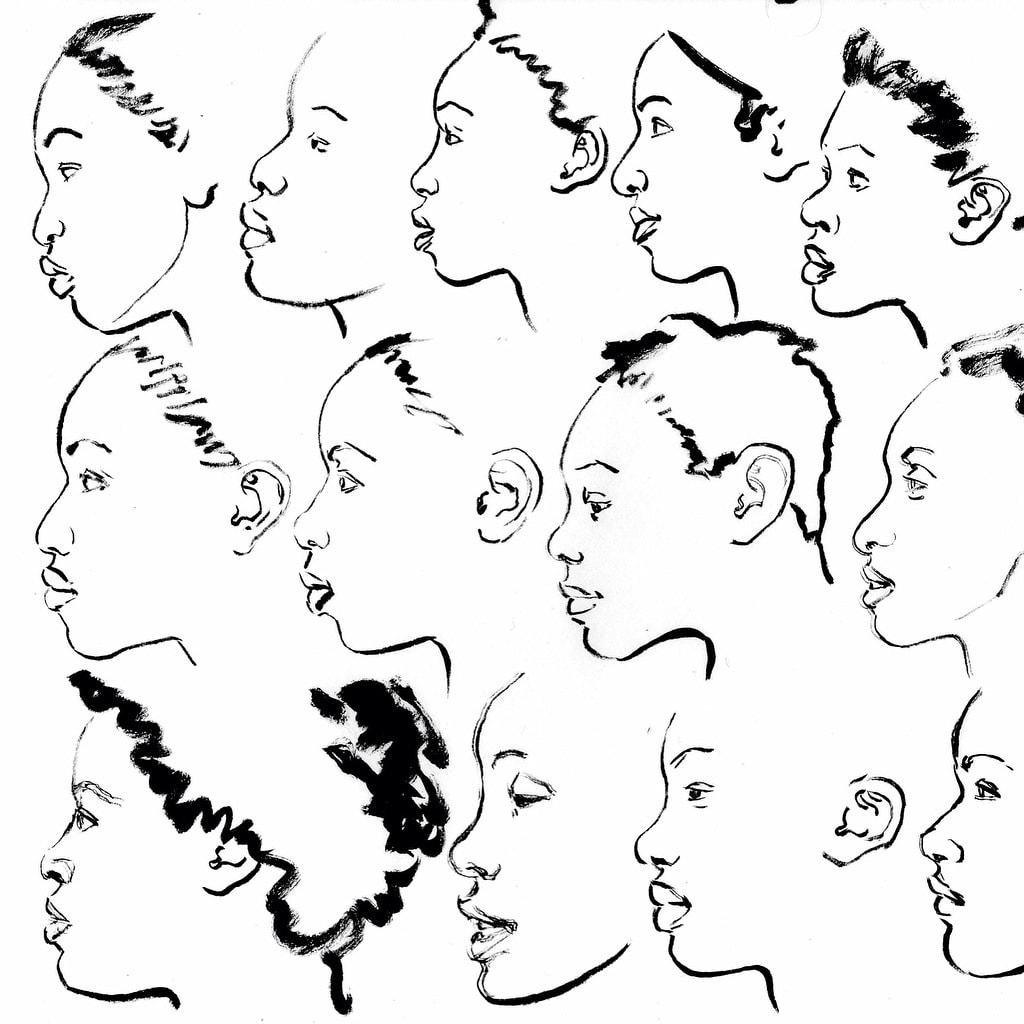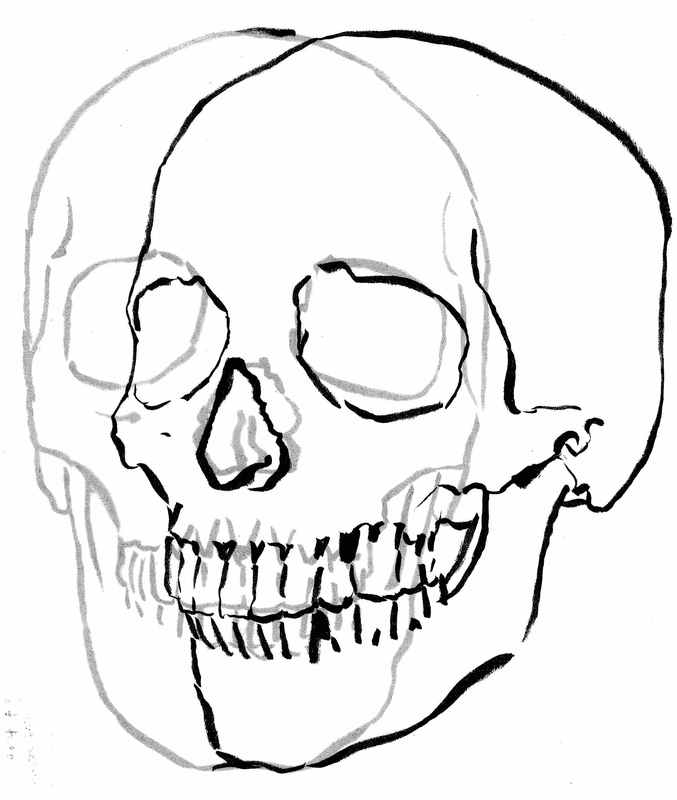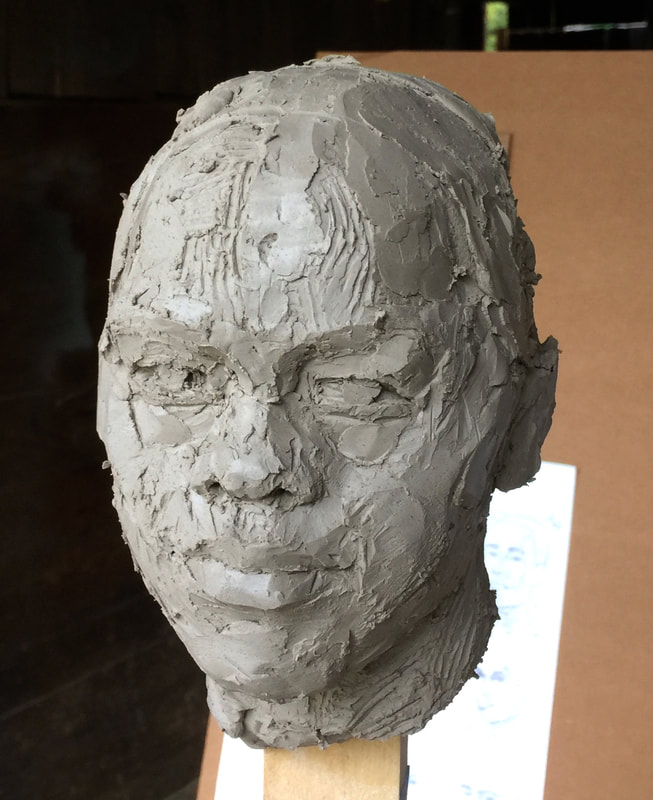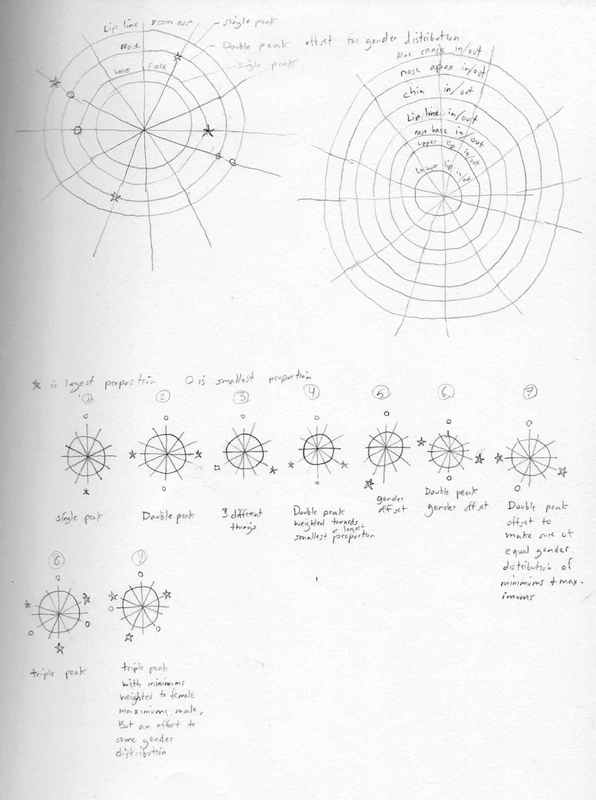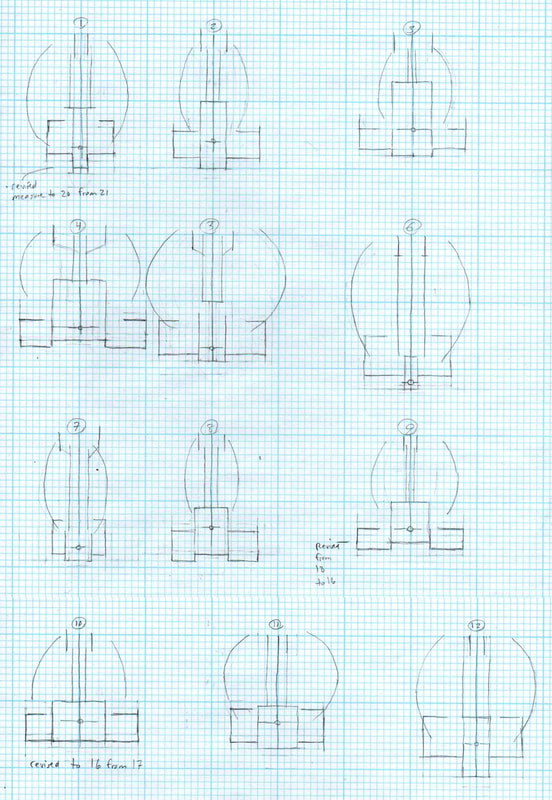People in General
Attempting to portray humanity involves an essential paradox. One cannot emotionally attach to a general concept of the face. That intrigue requires a specific representation.
To attain both abstraction and personality I attempt a gradated series of faces hinting at the great diversity of features possible. They refer to each other in a morph-like sequence implying the presence of variations in between each specific embodiment. It is a struggle to keep the faces from being generic in the manner that mathematically generated morphs usually are. Each must be characterful. The total sequence must hint at the widest range of human form.
The first explorations in this vein relied on copious sketching from the internet and from life. This was followed by development of a set of about 40 facial measurements to prioritize. I did not rely heavily on other people's data because there is no total catalogue of the human face. All data sets contain bias. In developing my own information I was able to wrestle with issues of my own assumptions.
To date I have done several iterations of a series of 12. Each could yield its own discussion about the difficulties of the project including the problems of representing race and gender. There will be no perfect answer to portraying humanity. I am still seeking the approach that will speak to the impossibility of the task yet also manifest the visions that propel the attempt.
To attain both abstraction and personality I attempt a gradated series of faces hinting at the great diversity of features possible. They refer to each other in a morph-like sequence implying the presence of variations in between each specific embodiment. It is a struggle to keep the faces from being generic in the manner that mathematically generated morphs usually are. Each must be characterful. The total sequence must hint at the widest range of human form.
The first explorations in this vein relied on copious sketching from the internet and from life. This was followed by development of a set of about 40 facial measurements to prioritize. I did not rely heavily on other people's data because there is no total catalogue of the human face. All data sets contain bias. In developing my own information I was able to wrestle with issues of my own assumptions.
To date I have done several iterations of a series of 12. Each could yield its own discussion about the difficulties of the project including the problems of representing race and gender. There will be no perfect answer to portraying humanity. I am still seeking the approach that will speak to the impossibility of the task yet also manifest the visions that propel the attempt.

